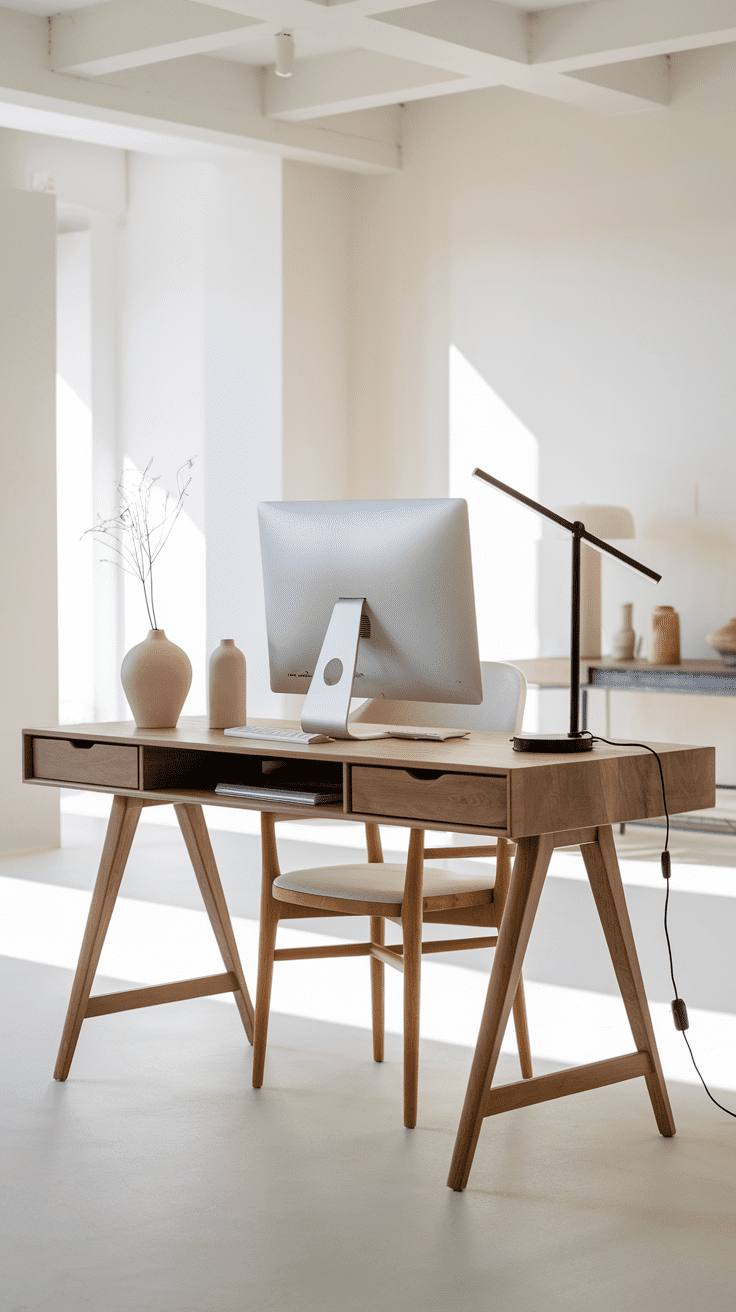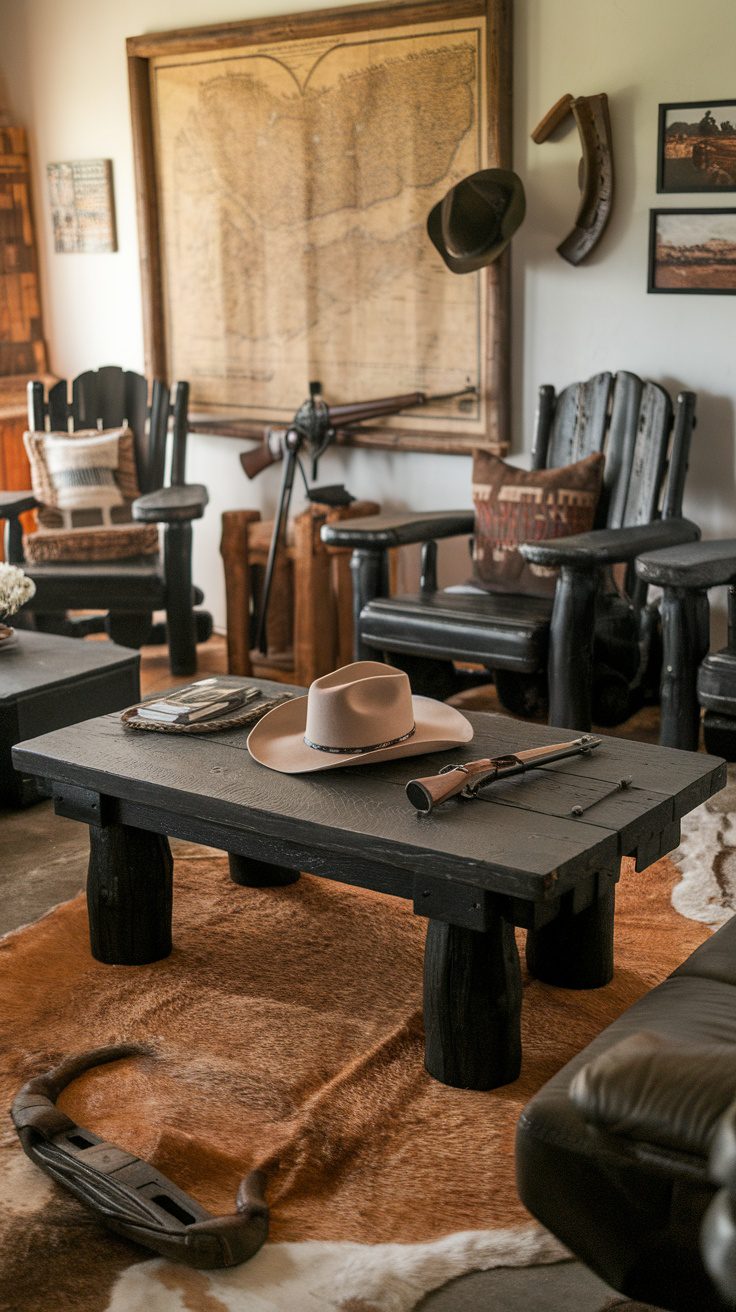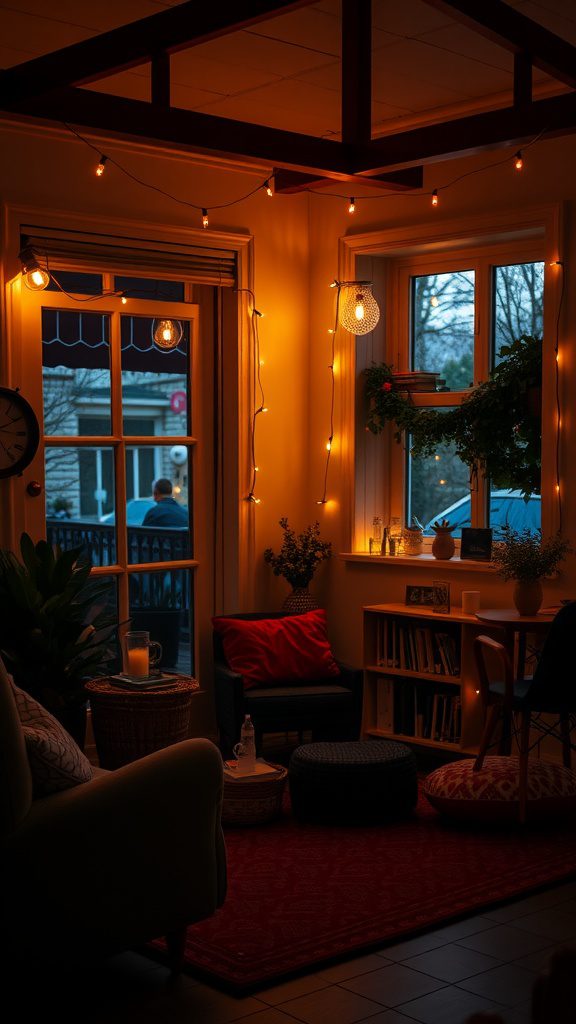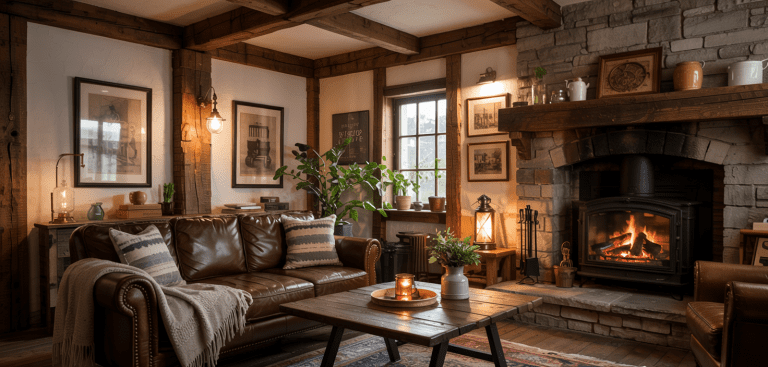44 Surprising Benefits of a Minimalist Home Office

Have you ever thought about how your home office setup might be affecting your work? You’d be surprised at the difference a minimalist approach can make. It’s not just about having a tidy desk; it’s about creating a space that helps you focus and get stuff done. By cutting out the clutter, you’re not just clearing your desk – you’re clearing your mind, too. This article dives into the unexpected perks of keeping it simple in your home office, from boosting your mood to saving a few bucks.
Key Takeaways
- A minimalist home office can improve focus and productivity by reducing distractions.
- Natural light and ergonomic furniture are key elements in creating a comfortable and efficient workspace.
- Decluttering your office space can help reduce stress and improve mental clarity.
- Investing in quality over quantity can result in long-term financial savings.
- A minimalist office design is good for you and benefits the environment by reducing waste.
Creating a Sanctuary: The Essence of a Minimalist Home Office

Embracing Simplicity for Enhanced Focus
Let’s face it, clutter is a killer of concentration. In our minimalist home office, we prioritize simplicity to boost our focus. By eliminating unnecessary items, we create a clear space that invites productivity. Imagine a desk with only the essentials: a laptop, a notepad, and maybe a plant for a touch of nature. This setup reduces distractions and helps us zero in on our tasks. The beauty of minimalism is that it allows us to see what’s truly important.


The Role of Natural Light in Productivity
Natural light is a game changer in any workspace. It not only brightens up the room but also boosts our mood and productivity. We should position our desks near windows to soak up as much daylight as possible. If we’re stuck in a dim corner, consider using mirrors to reflect light around the room. This simple trick can transform a dark space into a vibrant, energizing environment.,


Choosing Ergonomic Furniture for Comfort
Comfort is key when we’re spending hours at our desks. Ergonomic furniture supports our bodies and prevents strain, making it a must-have in a minimalist office. We might opt for a chair that provides lumbar support or a desk that adjusts to our height. This way, we’re not just working hard; we’re working smart. Comfort leads to better posture, less fatigue, and ultimately, more productivity.
A minimalist home office isn’t just about cutting clutter; it’s about creating a space that nurtures our well-being and enhances our work life. By focusing on simplicity, natural light, and ergonomics, we build a sanctuary that supports both our mental and physical health. It’s a place where we can truly thrive.
The Psychological Benefits of a Minimalist Workspace


Reducing Stress Through Decluttering
We’ve all been there—staring at a desk piled high with papers, random office supplies, and yesterday’s coffee mug. It’s overwhelming, right? A cluttered space can lead to a cluttered mind. By clearing out the unnecessary, we not only tidy up our physical surroundings but also our mental landscape. This act of decluttering sends a message to our brain: “Hey, you’re in control now.” And with that control comes a noticeable dip in stress levels. Imagine starting each day with a clean slate, free from the chaos of clutter.


Boosting Creativity with a Clean Slate
When we strip away the excess, we’re left with space—both physically and mentally. This open environment is like a blank canvas, inviting creativity to flow. Without the distraction of disorganized piles or visual noise, our minds can wander freely, sparking new ideas and solutions. Think of it as giving your brain room to breathe and explore. Who knew that a minimalist approach could be the key to unlocking our creative potential?
Enhancing Mental Clarity and Focus
Minimalism isn’t just about aesthetics; it’s about creating an environment that supports our mental well-being. By reducing distractions, we can sharpen our focus and improve our clarity of thought. When our workspace is free from unnecessary items, we can concentrate better on the task at hand. It’s like turning down the volume on background noise, allowing us to zero in on what’s truly important. In a world that’s constantly vying for our attention, having a minimalist workspace can be a game-changer for our productivity.
Imagine walking into your home office and feeling a sense of calm wash over you. That’s the power of minimalism—it’s not just about less stuff, but about more peace and focus.
Designing for Functionality: Key Elements of a Minimalist Office




Incorporating Multi-Functional Furniture
In a minimalist home office, every piece of furniture should serve more than just one purpose. Think of a desk that doubles as a storage unit, or a chair that provides ergonomic support while adding to the room’s aesthetic. Multi-functional furniture helps us keep the space tidy and efficient, freeing up room for movement and creativity. Here’s a quick list to consider:
- Desks with built-in shelves or drawers
- Convertible seating options
- Tables that can collapse or expand
Utilizing Smart Storage Solutions
Storage is a big deal when it comes to maintaining a minimalist vibe. We need to embrace clever storage solutions that keep our essentials within reach but out of sight. Consider using vertical space with wall-mounted shelves or cabinets that blend with the decor. Hidden storage compartments can also work wonders, ensuring that our workspace remains clean and clutter-free.
Balancing Aesthetics and Practicality
A minimalist office doesn’t mean it should be devoid of personality. It’s all about striking the right balance between looking good and being functional. We aim for clean lines and neutral colors, but we can also add a pop of color with a piece of art or a plant. The key is to choose items that are both beautiful and useful, creating a space that inspires productivity without sacrificing style.
When we design our home office with functionality in mind, we create a space that not only looks good but also works hard for us. It’s about making thoughtful choices that enhance the way we work and live.
The Financial Upside of Minimalism in Your Home Office


Cutting Costs with Minimalist Choices
When we opt for a minimalist home office, we’re not just creating a serene workspace; we’re also saving money. By focusing on essentials and eliminating the unnecessary, we cut down on expenses. Think about it: fewer items mean less money spent on things we don’t truly need. Here’s how we can maximize savings:
- Furniture: Instead of buying a desk, a chair, and a filing cabinet separately, consider multi-functional furniture that combines these features. This not only saves space but also reduces costs.
- Decor: Embrace simplicity. By choosing a few key pieces that serve a purpose, we avoid the trap of buying trendy decor that quickly becomes outdated.
- Supplies: Limit office supplies to what’s necessary. Bulk buying can be tempting, but it often leads to clutter and wasted money.


Investing in Quality Over Quantity
Minimalism encourages us to invest in quality items that last longer rather than cheap, disposable products. This approach may seem expensive upfront, but it saves money in the long run. When we choose durable, well-made items, we avoid frequent replacements. For example:
- A high-quality ergonomic chair might have a higher initial cost, but it will last for years, providing comfort and support without the need for constant replacement.
- Opting for energy-efficient lighting and electronics can reduce utility bills over time, making them a smart investment.
Long-Term Savings Through Reduced Clutter
Clutter isn’t just a visual distraction; it has a financial impact too. By maintaining a minimalist home office, we avoid the costs associated with clutter, such as storage solutions and the time spent organizing. Here’s how minimalism contributes to long-term savings:
- Time is Money: A clutter-free space means less time spent searching for items, allowing us to focus on work and productivity.
- Selling Unused Items: Decluttering often reveals items we no longer need. Selling these can recoup some of our initial expenses, adding to our savings.
Minimalism isn’t just a design choice; it’s a financial strategy that helps us focus on what truly matters while saving money. By making thoughtful choices, we create a workspace that supports our goals and our budget.
Personalizing Your Minimalist Home Office



Infusing Personal Touches Without Clutter
Creating a minimalist home office doesn’t mean sacrificing personality. We can add character without the clutter by choosing pieces that truly speak to us. Consider adding a favorite piece of art or a small plant to bring life to the space. A single, meaningful photo can also personalize your desk without overwhelming it. It’s all about finding balance between simplicity and self-expression.

Creating Zones for Different Tasks
Organizing your home office into specific zones can dramatically boost productivity. Think about setting up distinct areas for different activities, like a dedicated spot for computer work, another for reading, and a separate space for creative tasks. This not only helps in keeping the area organized but also mentally prepares us for the task at hand, making transitions smoother and more focused.
Incorporating Inspiring Elements
Inspiration doesn’t need to be loud or flashy. Subtle elements like a soft rug underfoot, a vase with fresh flowers, or even a vibrant piece of decor can uplift the mood of the office. These small touches can make the space feel inviting and energizing, encouraging us to spend more time there and be productive. The key is to choose items that not only inspire but also align with the minimalist aesthetic, ensuring they add to the tranquility rather than detract from it.
Our minimalist home office should be a reflection of who we are, a place where simplicity meets personal flair, allowing us to work efficiently while surrounded by things that truly matter to us.
The Environmental Impact of a Minimalist Home Office


Reducing Waste Through Conscious Consumption
Minimalism is all about having less, and this naturally leads to less waste. When we choose to buy only what we need, we cut down on unnecessary purchases that often end up in the trash. This approach encourages us to think twice before buying something new, asking ourselves if it truly adds value to our lives. By reducing consumption, we’re not only saving money but also reducing the demand for production, which in turn lowers our carbon footprint.


Choosing Sustainable Materials
When setting up a minimalist home office, opting for sustainable materials is key. This means selecting furniture and accessories made from recycled or renewable resources. Bamboo desks, recycled metal chairs, and LED lighting are great choices. Not only do these materials have a lower environmental impact, but they also tend to last longer, reducing the need for frequent replacements.
Minimizing Energy Use with Efficient Design
A minimalist home office often incorporates natural light to create a bright and inviting space. This not only enhances the aesthetics but also significantly cuts down on energy consumption. Placing your desk near a window can reduce the need for artificial lighting during the day. Additionally, using energy-efficient appliances and unplugging electronics when not in use further minimizes energy consumption.
Creating a minimalist home office isn’t just about aesthetics; it’s a step towards a more sustainable lifestyle. By making conscious choices in our workspace, we contribute to a healthier planet. Every small change counts, and together, they add up to make a big difference.
The Ripple Effect: How a Minimalist Office Transforms Your Home


Spreading Organization Throughout the House
Once we embrace the minimalist lifestyle in our home office, it tends to spill over into the rest of the house. A tidy desk often leads to a tidy mind, and that mindset naturally extends to other areas. We start noticing clutter in the living room or kitchen that we never paid attention to before. And suddenly, decluttering becomes a habit. We find ourselves organizing shelves, clearing out closets, and even tackling those dreaded junk drawers. It’s amazing how a little bit of order in one room can inspire a whole-house transformation.


Encouraging a Minimalist Lifestyle
There’s something incredibly freeing about letting go of excess stuff. Minimalism isn’t just about having fewer things; it’s about valuing what we have. As we strip away the unnecessary, we discover a new appreciation for simplicity and functionality. This mindset can lead to more mindful consumption habits. We become more intentional with our purchases, focusing on quality rather than quantity. This shift not only benefits our home environment but also our mental well-being.
Fostering a Calmer Home Environment
A minimalist office doesn’t just change the physical space; it transforms the emotional atmosphere of our home. With less clutter, there’s less stress. We find ourselves more relaxed and at ease. The simplicity of a minimalist design creates a sense of calm and tranquility that permeates throughout the house. Our home becomes a sanctuary, a place where we can unwind and recharge. This peaceful environment enhances our relationships, allowing us to connect more deeply with loved ones without the distraction of clutter.
Overcoming Challenges in Creating a Minimalist Home Office


Dealing with Sentimental Clutter
We’ve all been there—holding onto items because they remind us of a special moment or person. But in a minimalist home office, it’s important to prioritize functionality over sentiment. Ask yourself if each item truly serves your work needs or if it’s simply taking up space. One approach is to choose a few meaningful items that bring joy and store the rest elsewhere. This way, you keep the essence without the excess.


Maintaining Minimalism Over Time
It’s easy to start with a clean slate, but keeping it that way is another story. Regular decluttering sessions are key. Set a monthly reminder to evaluate your space. Are items starting to pile up? Is your workspace still as streamlined as it was? Remember, a minimalist office isn’t a one-time setup—it’s an ongoing commitment.
Adapting Minimalism to Personal Needs
Minimalism isn’t a one-size-fits-all concept. What works for someone else might not suit your style or needs. Maybe you need more storage solutions or a specific type of desk to fit your workflow. The goal is to create a space that supports your productivity, not hinders it. So, feel free to tweak the minimalist approach to better align with your personal and professional life.
Minimalism is about intentionality. It’s not about having less for the sake of less, but about making room for what truly matters. In your home office, this means creating a space that helps you work efficiently and peacefully.
For those interested in enhancing their home office setup, zoning your space and picking the right desk and chair can make a world of difference. Remember, minimalism is a personal journey—find what works for you and your productivity.
The Role of Technology in a Minimalist Home Office


Leveraging Digital Tools for Organization
In a minimalist home office, technology is our best friend. Digital tools help us keep everything organized without cluttering our space. Think about it: instead of papers and sticky notes everywhere, we can use apps to track tasks, manage calendars, and store documents. It’s like having a personal assistant that doesn’t take up any desk space. Here are some digital tools we love:
- Task management apps like Todoist or Asana
- Cloud storage solutions like Google Drive or Dropbox
- Note-taking apps like Evernote or OneNote
These tools not only save space but also make it easier to find what we need when we need it.


Minimizing Physical Clutter with Tech Solutions
Gone are the days of needing stacks of papers and files. With technology, we can digitize almost everything. Scanners and smartphone apps let us convert documents into digital files, reducing the need for physical storage. Plus, e-books and online resources mean fewer books crowding the shelves. It’s about making smart choices with tech to keep our workspace clean and efficient.
Balancing Screen Time and Mindfulness
While technology is a boon, it’s easy to get lost in screens all day. We need to find a balance to maintain our well-being. Setting boundaries is key. We can:
- Schedule regular breaks away from the screen.
- Use apps that remind us to take these breaks.
- Practice mindfulness techniques, like deep breathing, to stay grounded.
Let’s not forget, a minimalist office isn’t just about reducing clutter; it’s about creating a space that supports our mental and physical health. Embracing technology wisely helps us do just that.
The Social and Emotional Benefits of a Minimalist Workspace


Building Deeper Connections with Less Distraction
In today’s fast-paced world, our attention is constantly pulled in a million directions. A minimalist workspace helps cut through this noise, allowing us to focus on what truly matters—our relationships. By reducing the clutter around us, we create an environment where we can be more present with others. Imagine sitting with a friend or colleague, free from the distractions of a messy desk. Conversations become more meaningful, and connections deepen. It’s like removing the static from a radio signal, leaving only the clear, crisp sound of genuine interaction.


Enhancing Work-Life Balance
A minimalist workspace isn’t just about aesthetics; it’s about creating a boundary between work and personal life. When our workspace is organized and free from unnecessary items, it becomes easier to switch off at the end of the day. This separation is crucial for maintaining a healthy work-life balance. Consider the satisfaction of closing your laptop on a clean desk at the end of a long day, knowing that everything is in its place. This clarity allows us to transition smoothly into personal time, without the lingering stress of work-related chaos.
Cultivating a Sense of Accomplishment
There’s something incredibly rewarding about looking at a tidy, minimalist workspace. It reflects our ability to manage our environment and, by extension, our tasks. When we can see our progress—literally and figuratively—our sense of accomplishment grows. Minimalism in our workspace encourages us to focus on what we’ve achieved rather than what’s left undone. It’s like ticking off items on a to-do list; each tick is a small victory that boosts our confidence and motivation.
A minimalist workspace is more than just a tidy desk—it’s a catalyst for richer connections, a healthier work-life balance, and a greater sense of achievement. By embracing minimalism, we not only transform our work environment but also enhance our social and emotional well-being.
Case Studies: Success Stories of Minimalist Home Offices


Real-Life Transformations and Their Impact
Let’s talk about real people who’ve made the switch to a minimalist home office and how it’s changed their lives. Minimalism isn’t just about having fewer things; it’s about creating a space that works for you. Take Jane, for example. She transformed her cluttered spare room into a minimalist office. By removing unnecessary furniture and using natural light, she found herself more focused and productive. Her mornings are now less about searching for things and more about getting things done.
Lessons Learned from Minimalist Pioneers
We’ve all heard the stories of those who’ve embraced minimalism and never looked back. One common lesson is that less truly can be more. By choosing quality over quantity, these pioneers have found that their workspaces are not only more functional but also more enjoyable to be in. They emphasize the importance of starting small, perhaps by decluttering a single drawer or shelf, and gradually expanding that simplicity throughout the office.


Inspiring Others to Embrace Minimalism
Minimalist home offices can be contagious. When you see a friend or colleague thriving in their clean, organized space, it makes you wonder if you could do the same. It’s about creating an environment that supports your work and well-being. For those looking to start their own minimalist journey, consider these steps:
- Identify the essentials: What do you really need to work effectively?
- Let go of the rest: Donate, recycle, or store away items that don’t serve your work.
- Personalize with purpose: Add a few personal touches that inspire and motivate you.
Minimalism in the home office isn’t just a trend; it’s a way to reclaim your space and your peace of mind. As we continue to see success stories, we realize that a minimalist office isn’t just about aesthetics—it’s about creating a sanctuary that enhances our daily lives.
Frequently Asked Questions
Why is a minimalist home office better for productivity?
A minimalist home office reduces distractions, helping you focus better and work more efficiently.
How can I start creating a minimalist workspace?
Begin by decluttering your desk, keeping only essential items, and organizing your space to minimize distractions.
What kind of furniture works best in a minimalist office?
Ergonomic furniture that is simple and functional fits best in a minimalist office, offering comfort without clutter.
How does natural light affect productivity in a home office?
Natural light can boost your mood and energy levels, making you more productive and focused.
What are the cost benefits of having a minimalist office?
A minimalist office can save money by reducing the need for unnecessary items and focusing on quality over quantity.
How does minimalism impact mental well-being?
Minimalism can reduce stress and anxiety by creating a calm, organized environment that promotes mental clarity.
Can technology help maintain a minimalist office?
Yes, using digital tools can help organize tasks and reduce the need for physical clutter, keeping your workspace tidy.
What are some challenges of maintaining a minimalist office?
One challenge is dealing with sentimental clutter, but regular decluttering and sticking to minimalism principles can help.





